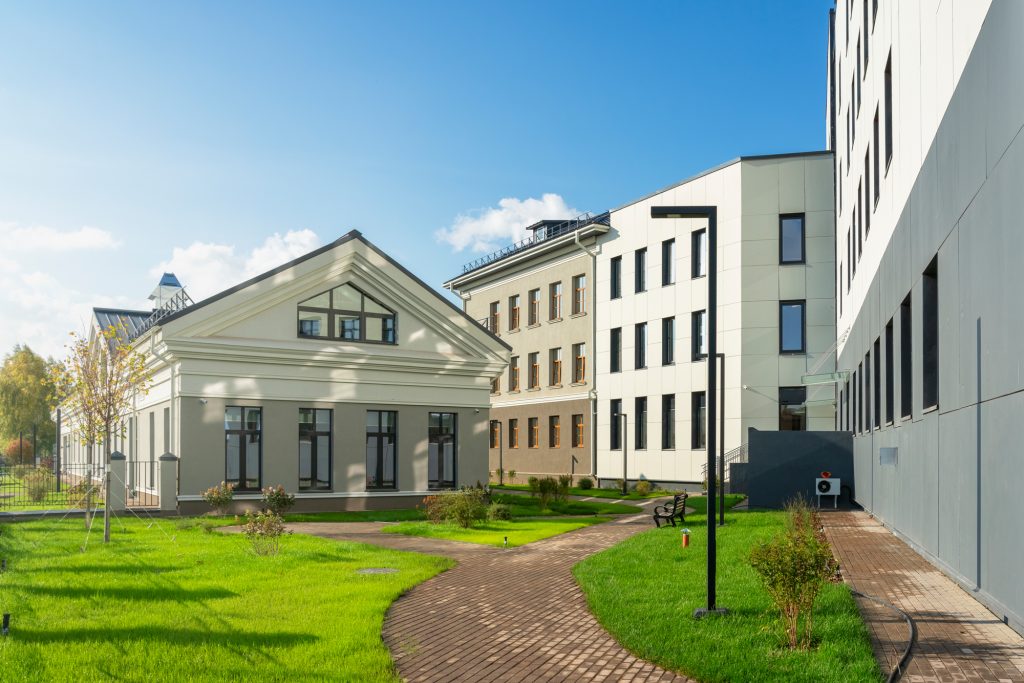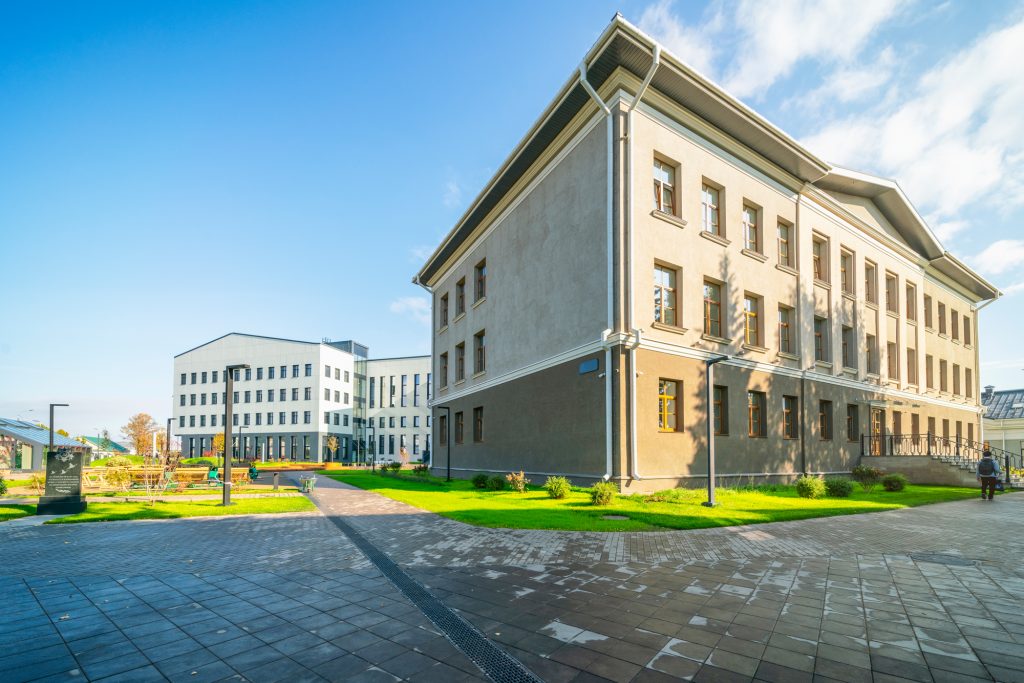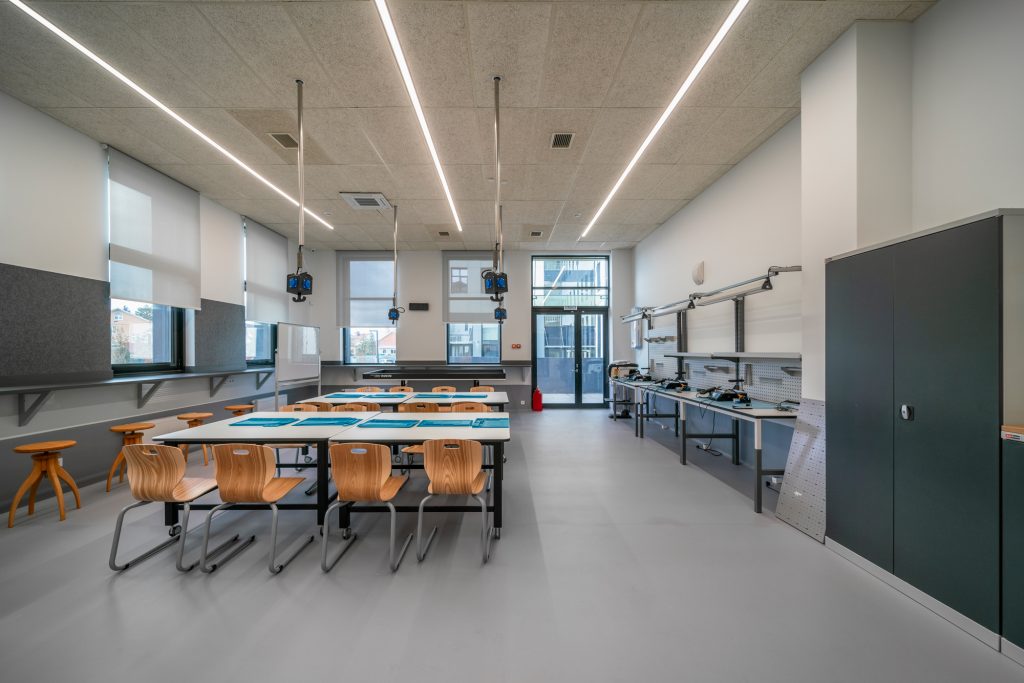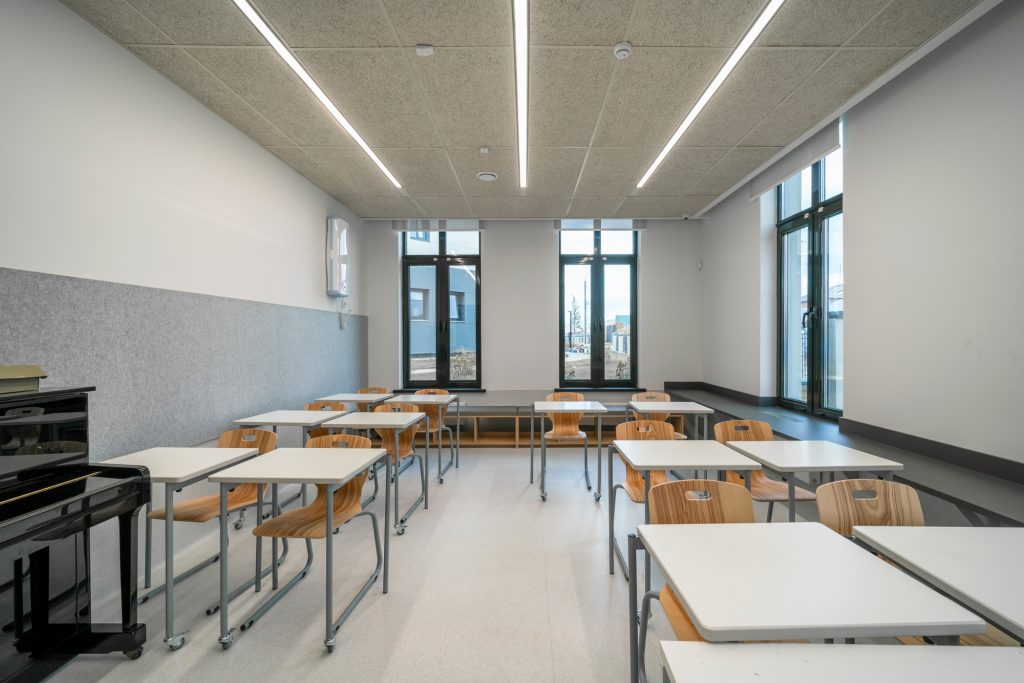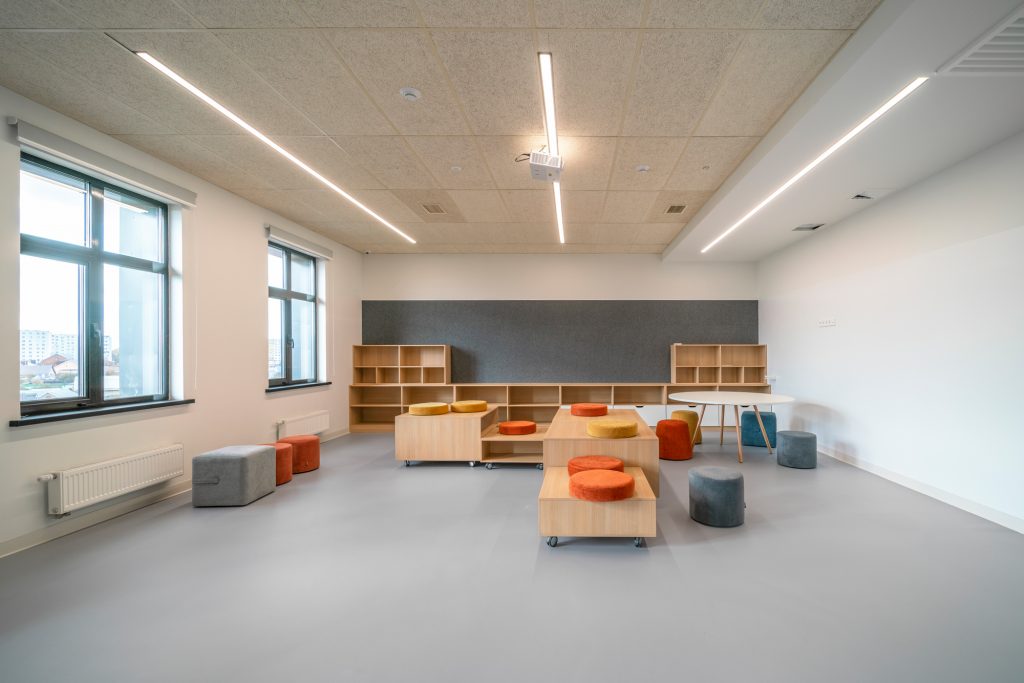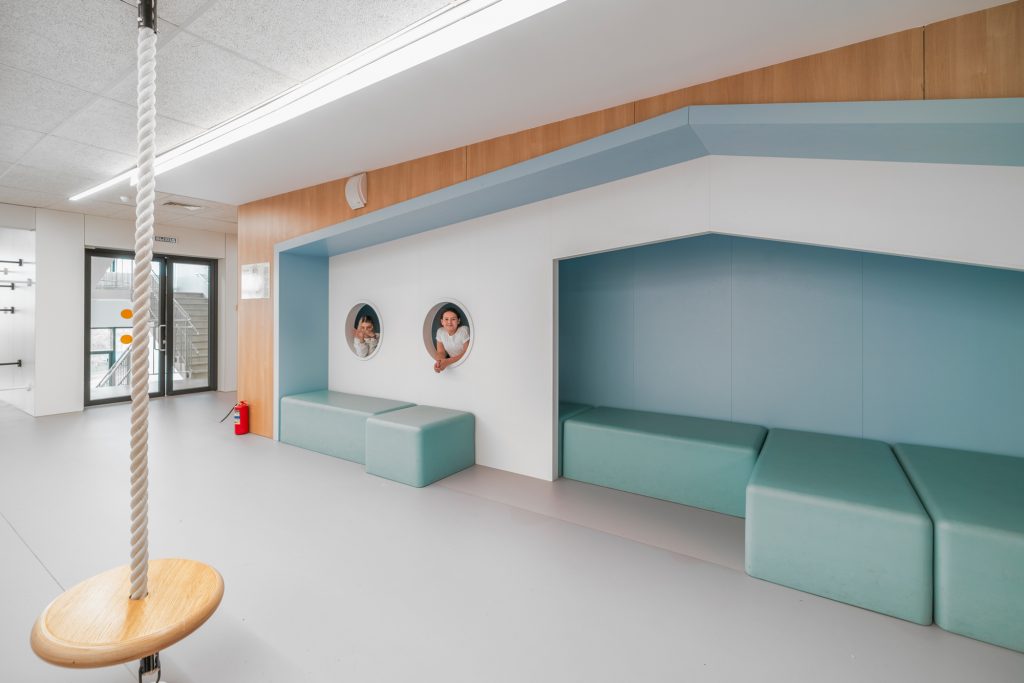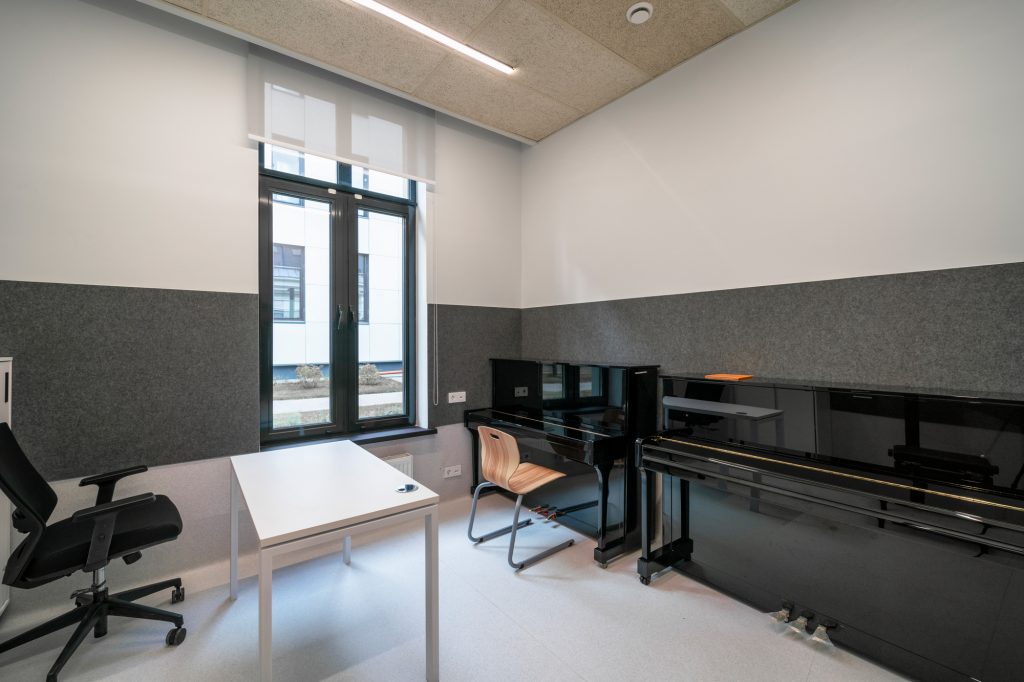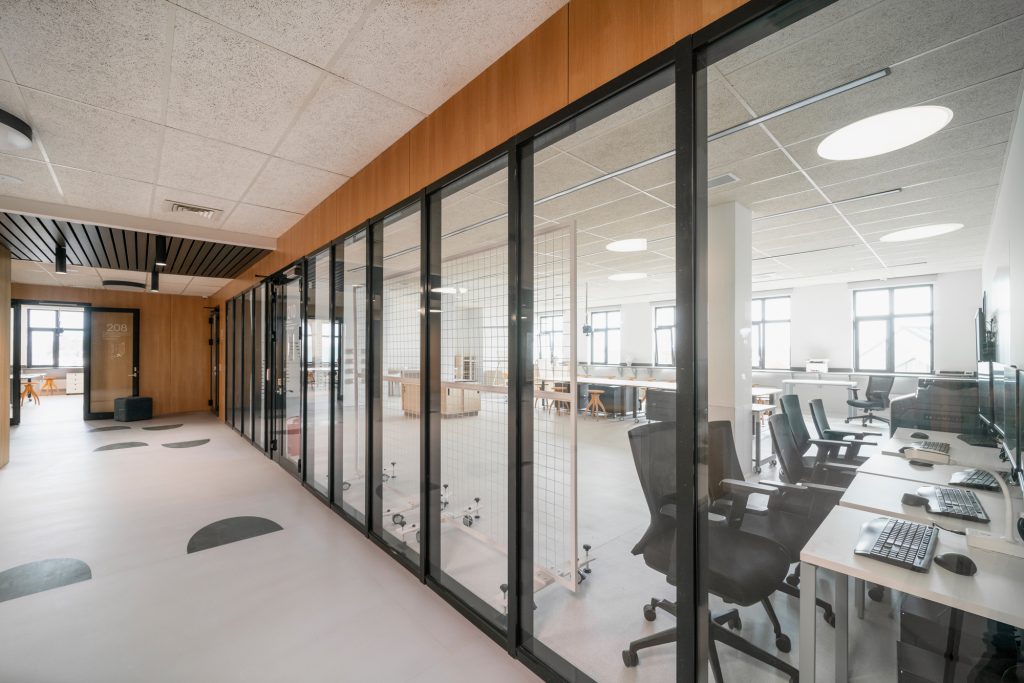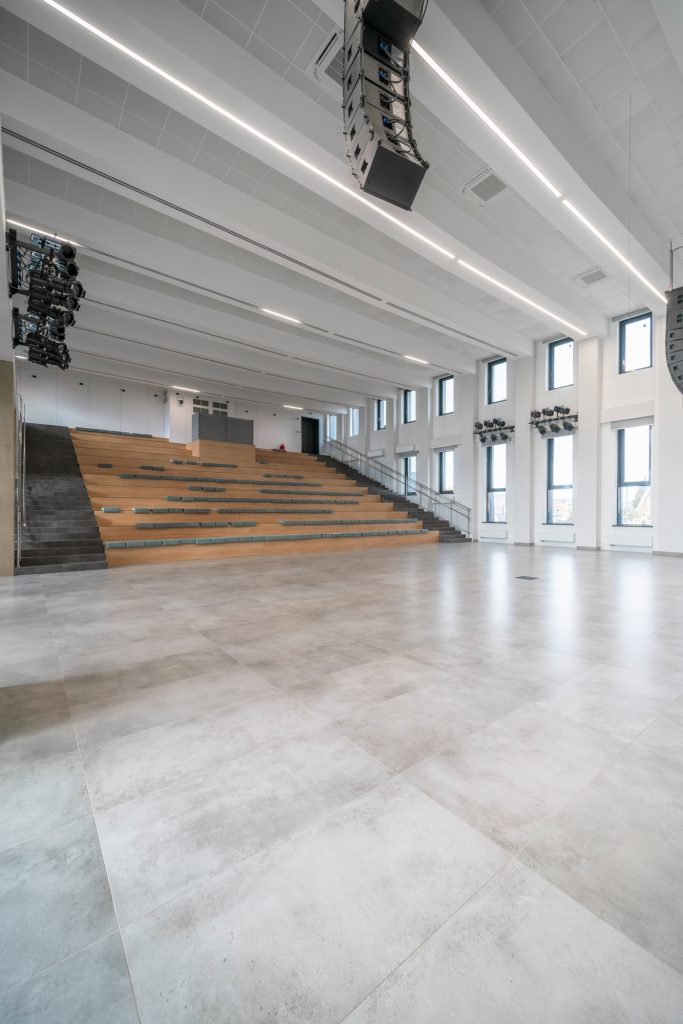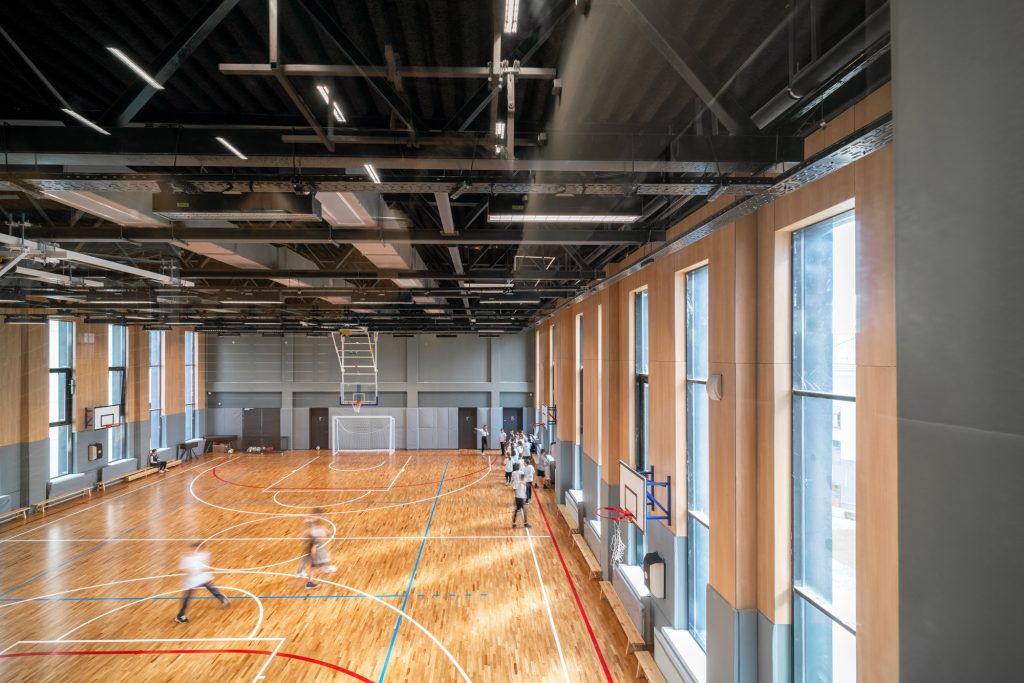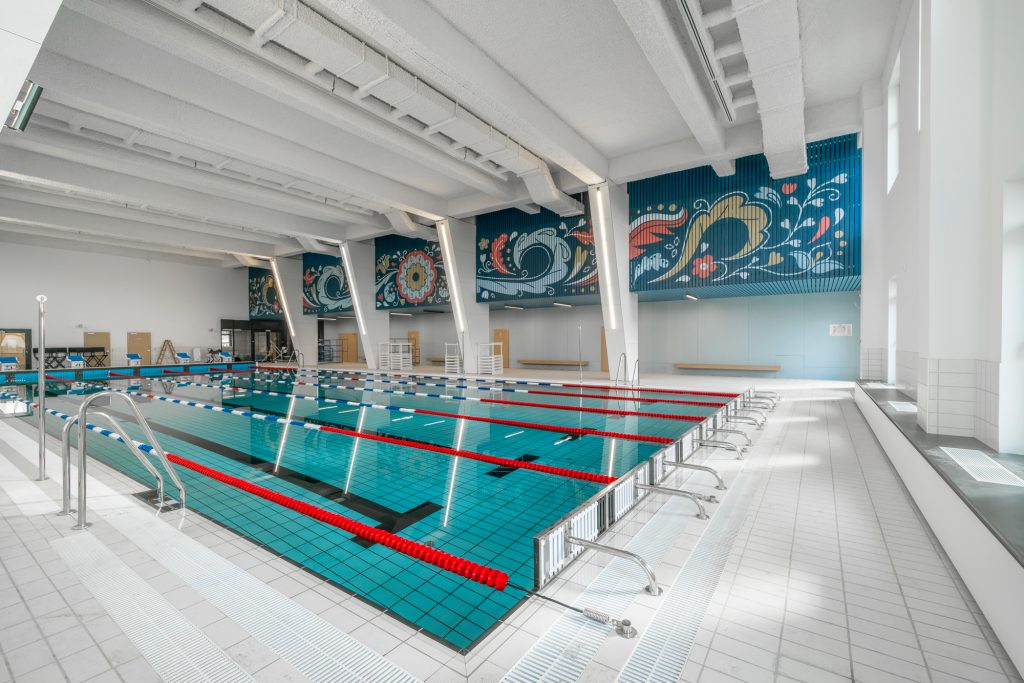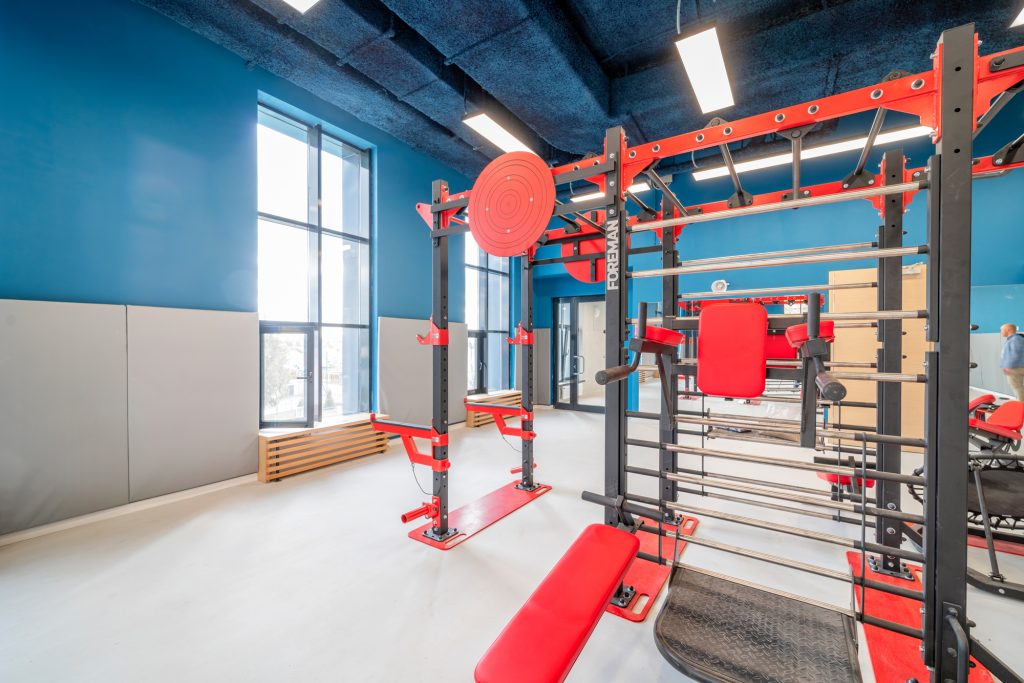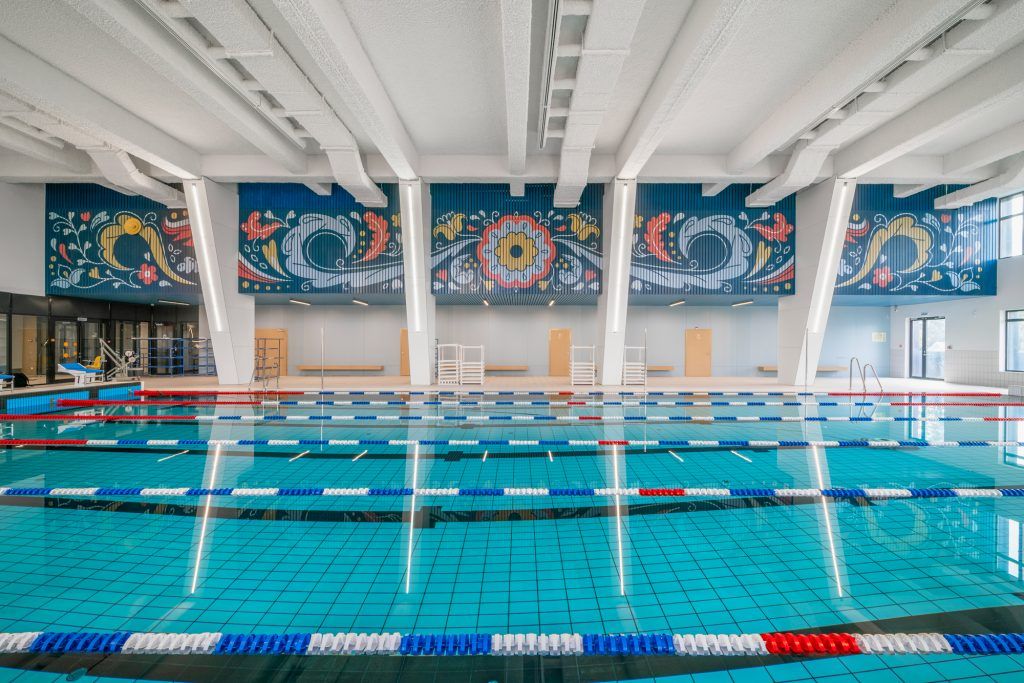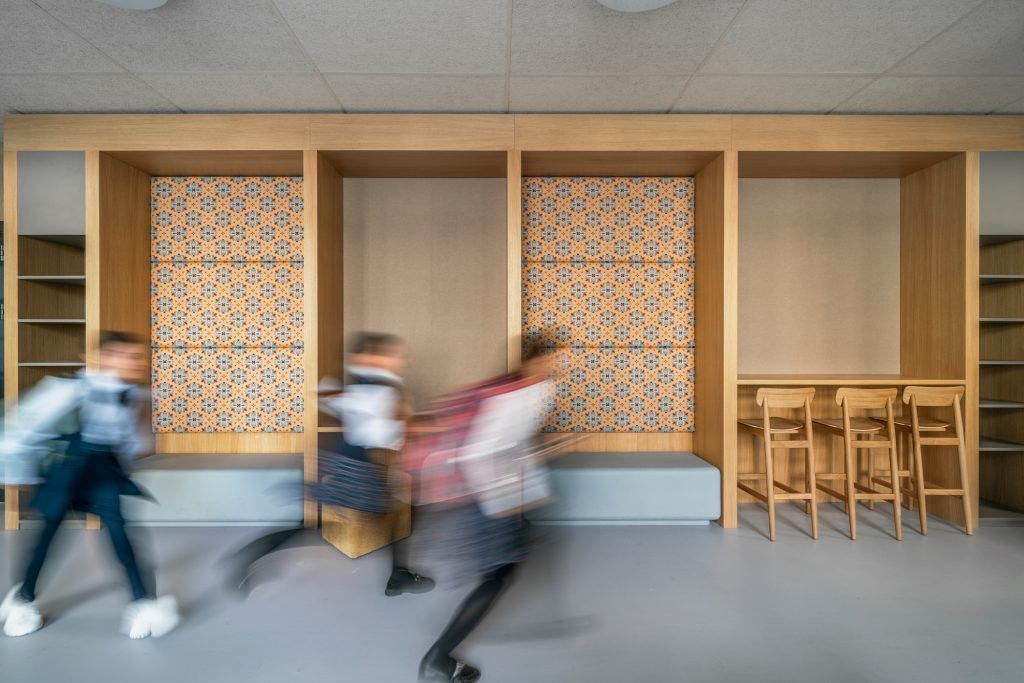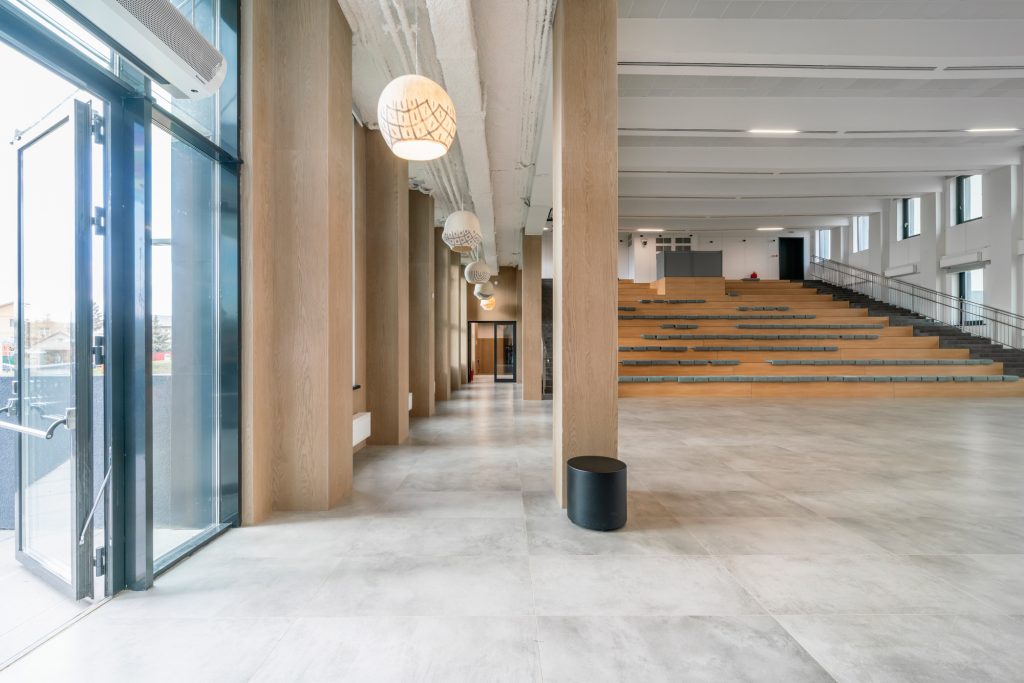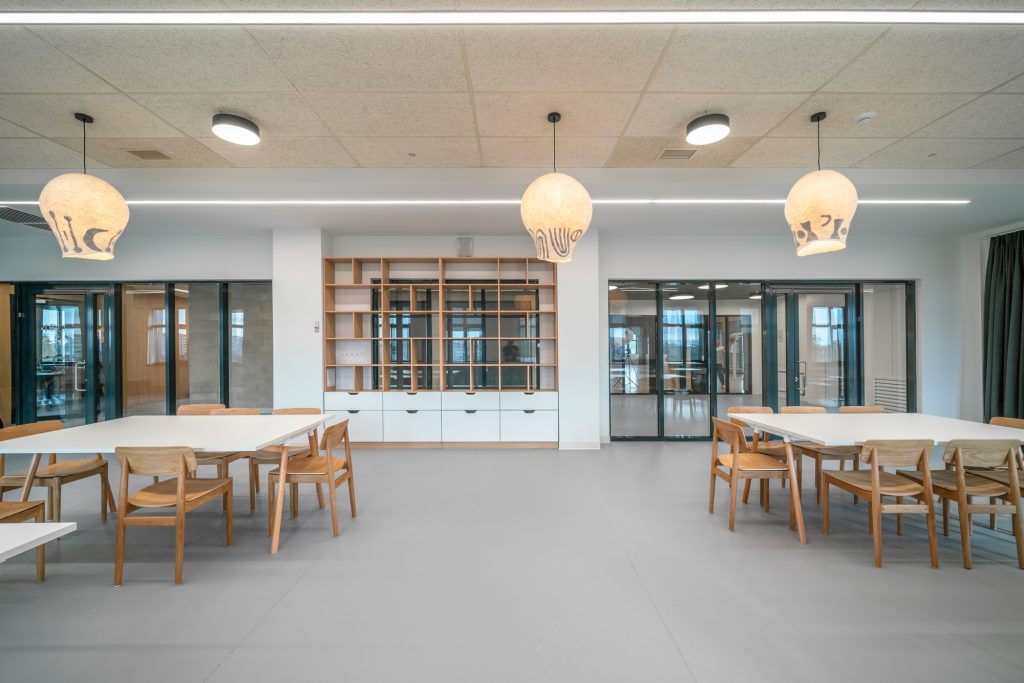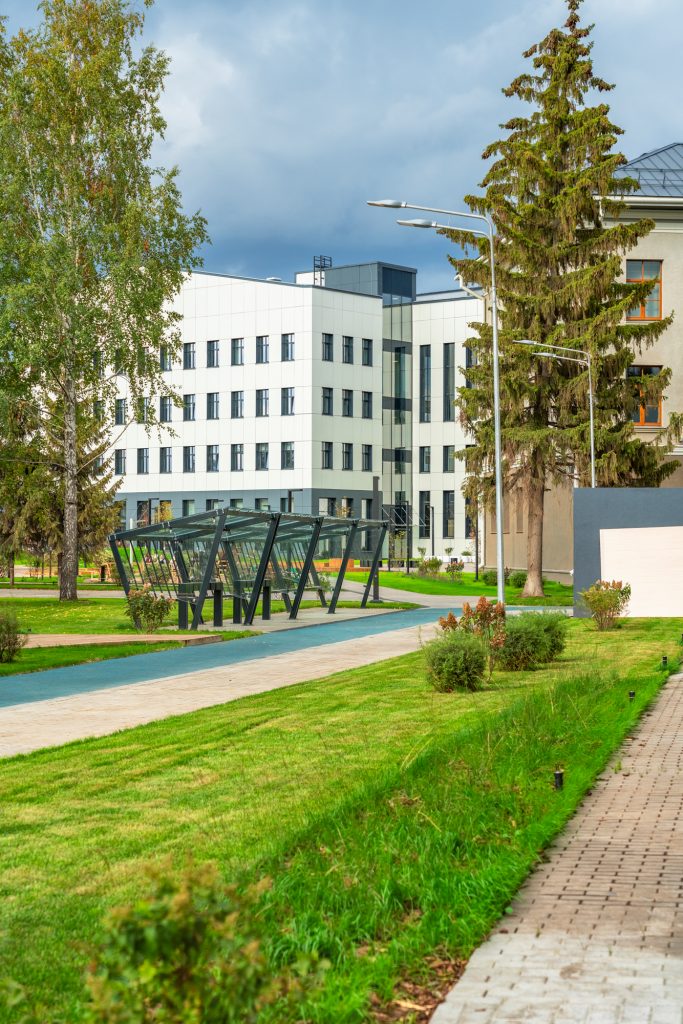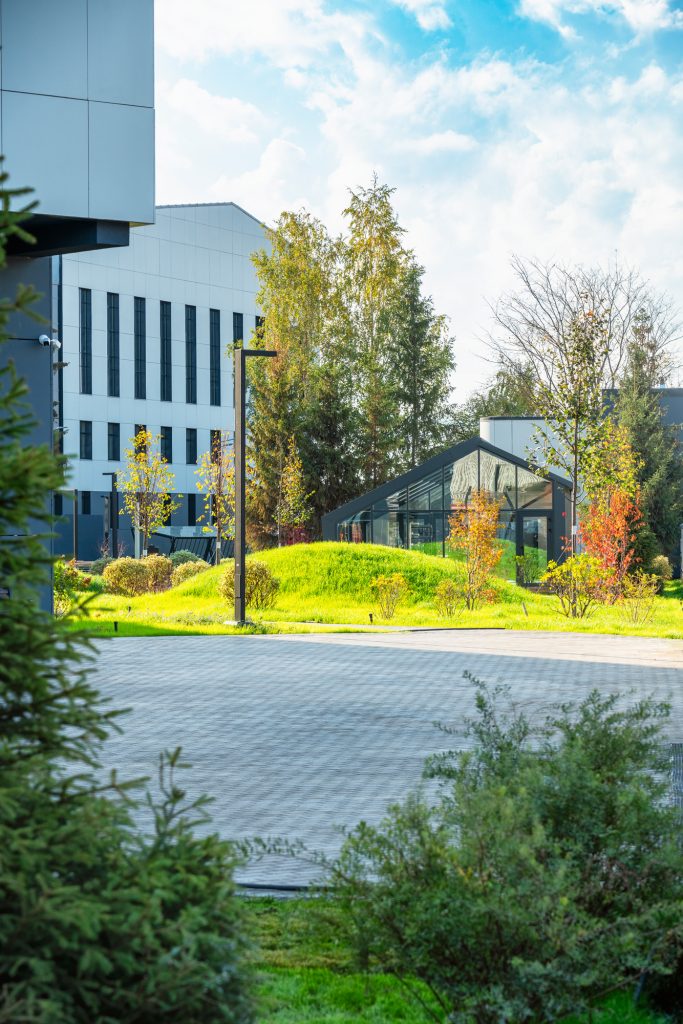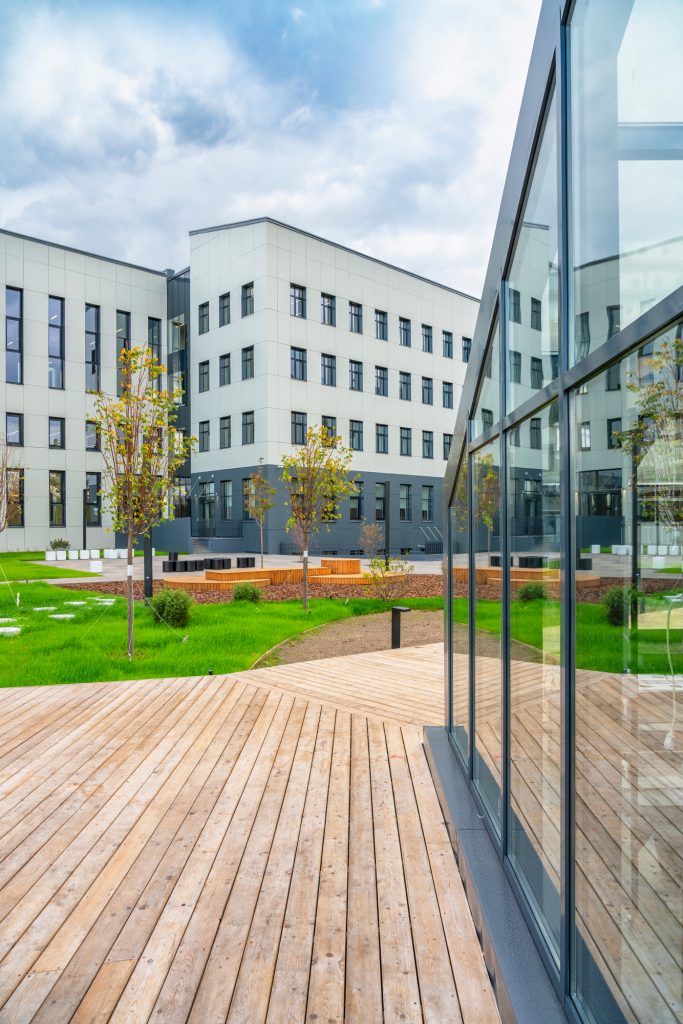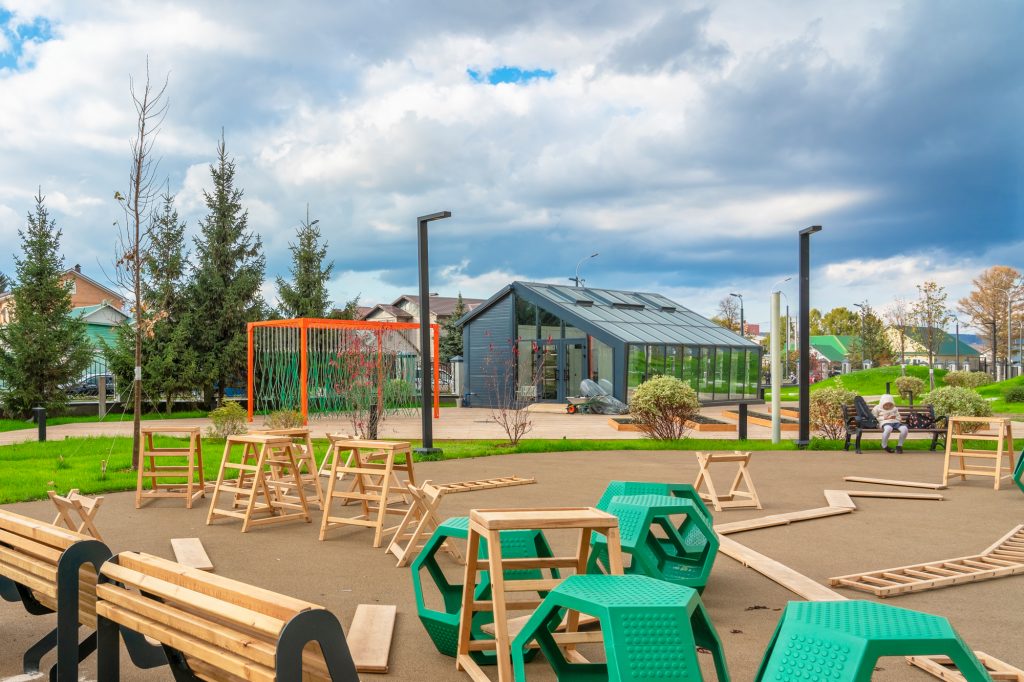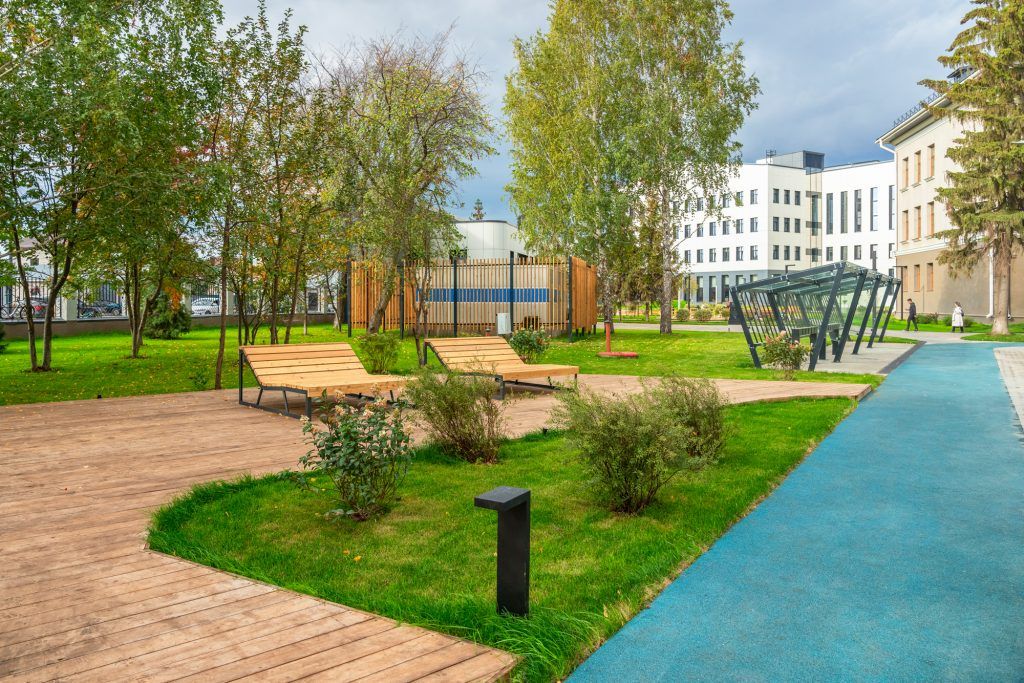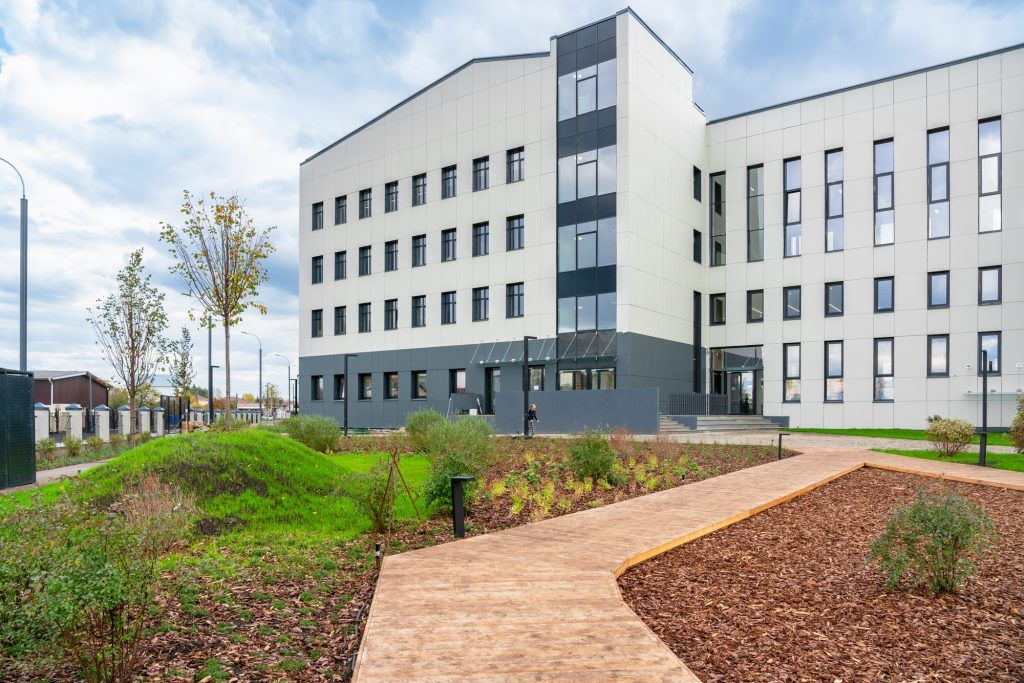On September 1, Lyceum No. 1 named after M.K. Tagirov, the oldest school in the city of Almetyevsk (Tatarstan) that is located in the very center, surrounded by historical buildings, was opened after a large-scale reconstruction.
EdDesign architects were faced with quite a sophisticated task. First, it was important to preserve the historical school building and fit the complex into the urban landscape, which has been already established. Second, it was necessary to seamlessly blend national motifs into the interior. Finally, third, the school had to be reconstructed in record time: just over eighteen months passed from launching the work on the project to the site commissioning.
Context of the Place
School No. 1 had to be fitted into the context of the existing historical buildings, mainly one- and two-story houses. The architects chose classical architecture with gable roofs, small windows, and light-colored, light and soaring façades. As a result, the school looks modern and laconic, but at the same time very cozy; it is self-sufficient but does not hold all the attention. The school is well-visible from different points of the city and looks fitted in the surroundings.
Based on photographs from the 1950s, the architects reconstructed the historical appearance of the old building. The building material, the name of which has become a household name in Almetyevsk – Chupaevsky Stone – limestone, which is mined in the local village, was used for finishing works. It was from this material that many buildings (including the school historical block) in the central part of the city were built in the middle of the last century.
Photo: Vitaliy Shabinskiy
It was not enough just to reconstruct the historical building. The project envisaged the expansion of both the school’s capacity (before the reconstruction, 736 students studied there, now its capacity is 990) and functionality. That’s why new educational buildings and two autonomous blocks (infrastructural and sports) were designed next to the historical one.
Currently, the primary school has its own block with a separate entrance and even a separate cafe, so that small kids don’t have to leave the building one more time. The upper secondary school is accommodated in the historical building and in the new block, which are connected by a link. The historical building has lost its autonomy; only classrooms, a media library and a large entrance area with a lobby remain there. The primary and secondary schools have a common point of attraction – the new block with an amphitheater, a canteen and a gym; otherwise they are completely separate.
![]()
Behind the emphatically classical façades, we can see innovative equipment that meets modern educational trends.
The classrooms are designed in such a way that it is possible to use different formats to study there. There are also huge classrooms where all students in the same year can be placed, and classrooms for 25 and 40 students, and rooms for thirteen, six and even four students to work individually or in small groups. In addition, hybrid classes are provided with the possibility to conduct lessons remotely.
Photo: Vitaliy Shabinskiy
The furniture is also modern. Instead of traditional desks, classrooms are equipped with single desks on wheels: they can be easily regrouped for teamwork if required. Instead of regular teacher tables, there are electrically driven tables that change their height; instead of traditional boards there are whiteboards with an interactive control panel. You can turn on the lights or raise the curtains by the control panel.
There are sofas and rocking chairs, in addition to desks in primary school classrooms, and there are many play areas where children can run and climb in the corridors and recreation areas.
Photo: Vitaliy Shabinskiy
Functional rooms are grouped into clusters. The science cluster includes state-of-the-art classrooms and laboratories in the core subjects (chemistry, physics, biology) as well as the computer skills room where students can use the augmented reality tools. The media lab cluster contains a recording studio, a video studio and a television studio with modern professional equipment. The art and workshop clusters include spaces for drawing and painting, 3D modeling, robotics, crafts, and cooking.
Photo: Vitaliy Shabinskiy
The school heart is a huge amphitheater accommodating up to 700 people. There is a spacious dining room behind a glass partition; if necessary, the partition is removed and the theater and dining room become a single space.
The engineering and technical solutions in the old-new school are also innovative: automated lighting synchronized with the bell schedule, closets with heated air, heated walkways and heat-insulated floor.
Photo: Vitaliy Shabinskiy
The heat recovery ventilation system has been installed: air circulates inside the buildings, passing through a filter system and bactericidal sections, and fresh air is supplied by a signal from automatic equipment, which evaluates the carbon dioxide concentration in the premises. All supply systems are equipped with anti-allergenic and bactericidal filters: this will help to reduce the likelihood of mutual infections at school. We have managed to implement a modern approach to the arrangement of the water consumption schedule: water fountains were installed, so that students can drink water and fill a water bottle in an absolutely hygienic way.
School as a Heart of the Community
Special attention is paid to sports in the complex. There is a gym in the main school building, above the amphitheater and dining room (plus a small gym for teachers on the fourth floor of the educational block), but it was decided to move the main sports functions to a separate building.
Photo: Vitaliy Shabinskiy
One more school block – an infrastructure one – will be opened for the residents of the city. It houses a music school, carpentry and metalworker’s workshops, and a garage – a full-fledged car repair shop with an observation pit. The infrastructure block has two separate entrances: one from the school grounds, the other from the street.
The very idea of the school implies the active involvement of the entire closely dwelling society. The sports block with a swimming pool, a climbing wall and gyms, the infrastructure complex with a music school, a full-fledged car repair shop, and carpentry and metalworker’s workshops – everything is ready for active extracurricular activities.
Unique Ornaments and Local Brands
Photo: Vitaliy Shabinskiy
Another important task set by the client for the architects was to emphasize Tatar national motifs in the school interior. The architects turned to local designers: Tatyana Chernoguzova created unique ornaments, which were later used in the upholstery of seating furniture in the educational blocks, and in finishing walls and ceilings in the sports block.
Photo: Vitaliy Shabinskiy
Furniture made by local brands was actively used. For example, the Desk student furniture in the upper secondary school and simple and exquisite Yaratam furniture in public spaces. The artist Milana Khalilova handmade original lamps from natural felt – with patterns that refer to primitive history.
Greenhouse, Hotel for Insects and Eco-trail: New School Surroundings
Huge old trees – firs and birches – grew along the perimeter of the premises. The architects tried to preserve them: they help to keep in mind that the school has been here for a long time and has its own history.
Photo: Vitaliy Shabinskiy
Large sports fields, an athletic track, an eco-trail, playgrounds for primary and secondary schools have appeared on the premises. The builder-playground turned out to be the most in demand: queues are literally lining up to it. There are places for relaxation and privacy, locations for observing nature (for example, a hotel for insects and a bird canteen, a set of feeders).
Photo: Vitaliy Shabinskiy
In addition, there is now a greenhouse on the premises that can be used all year round: it is connected to utility networks, it has a hydroponics system, and students are already cultivating greens and strawberries there. There is also a small outdoor vegetable garden.
December 2023
